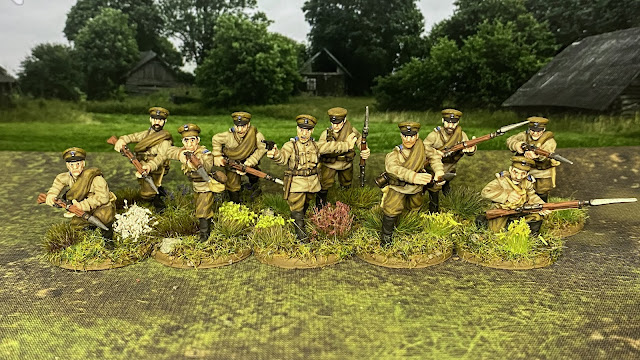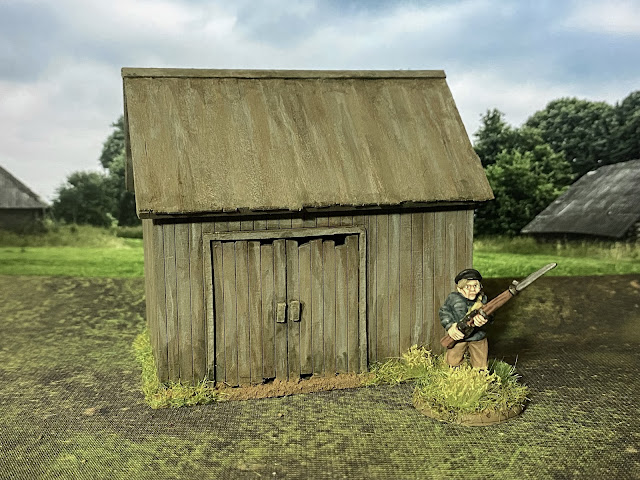So almost a year ago I thought I had wrapped up my Holy Roman Empire army for the late medieval/early renaissance era. But as with a lot of gamers, new toys catch your eye and you find an excuse to add to your army. For me, I was standardizing the storage boxes for this army from the mishmash I had, and now found myself with additional space in the new box that had to be filled with something. Finding a few packs of Artizan Spanish on clearance at my local store, I thought they would make a nice addition to the army. Of course a few packs don't add much, so I ordered two boxes of the Wargames Atlantic conquistadors to fill everything else.
First up is a command stand. Though I know Spain converted over to the Cross of Burgundy banner early in the wars, visually I don't find it very appealing and decided to use the earlier flag. Trying to paint the details in on a flag that size was beyond my aging eyes, so I just used a printed version. The commander and drummer are Wargames Atlantic plastics with a metal Artizan figure holding the banner. I think the two manufactures' figures are very similar in height and heft, so they are very easy to blend together.
Despite the shortcomings of the Wargames Atlantic kit mentioned above, I think they are a good value for the money and overall I'm happy the assembled figures. Throwing in the Artizan Design figures also gives you a bit of additional variability that only improves to the look of the units.
Spanish sword and bucklermen from Artizan Designs. For the heart shaped shields, you either had to fit them with the wide edge towards the hands or shoulder; I wasn't sure which would be more proper, but guessed hands. Hopefully I got it right.
Crossbowmen from the Kingdom of León. These were made form Wargames Atlantic figures with spare pavises from Old Glory. Frustratingly, the WA kit doesn't really include enough crossbow quivers for all the figures; because I wanted more firing/preparing to fire figures rather than loading (the loading hand is sculpted attached to the quiver), I ran short by one, even using two boxes of the kit. And if you go with the arquebus handgun option instead, there are no ammo pouches included at all. My other major complaint about the kit is that the paired arms aren’t numbered (and they aren’t always close to one another), so it was a bit of an annoying guessing game during assembly. Definitely a poor design choice by WA.
Pikemen. The majority of the figures are WA, with a few Artizan thrown in. As with most of my army units, I made the artistic decision to use a unifying color palate for the unit based on the banner they carry. The WA pike are very short (approximately 50mm) compared to other manufactures, which is a bit disappointing visually. Again, I'm not sure why WA made that decision. One thing I will get WA credit for is the wide variety of head options available. I chose to avoid the morion helmets to give the unit an earlier feel, and I still managed to get quiet a bit of diversity of out of what remained.
Despite the shortcomings of the Wargames Atlantic kit mentioned above, I think they are a good value for the money and overall I'm happy the assembled figures. Throwing in the Artizan Design figures also gives you a bit of additional variability that only improves to the look of the units.











































